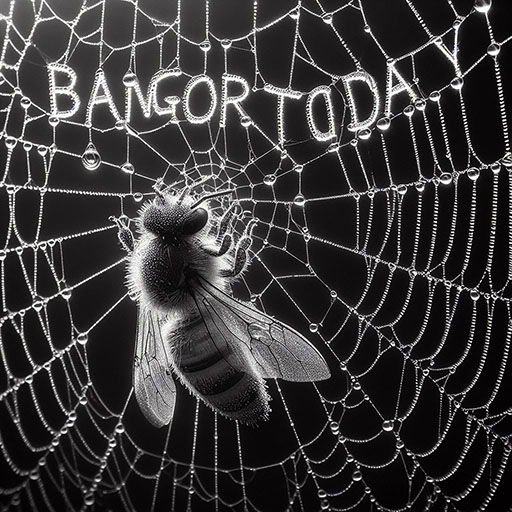The Penobscot River!
In 2012, just before they tore down the Great Works Dam in Old Town, Maine, Dan Kusnierz took his sons for a photo by the Penobscot River. They were having fun, not knowing that the river, New England’s second-largest, was about to change.
For nearly 200 years, the Penobscot River suffered because of the timber and paper industries. The river was filled with logs and waste from these industries. Dams, like the Great Works and Veazie, harmed the river. Dan Kusnierz, who worked for the Penobscot Indian Nation, joined a group of scientists, Indigenous people, and conservationists to remove these dams and help the Penobscot River.
The river had been in trouble for a long time. Butch Phillips, a Penobscot Nation elder, remembered the river being different in the 1950s. Drifting logs made it hard for boats to pass. The river was vital for the Penobscot people, who used canoes before a bridge was built in 1950. Even with pollution from mills, the river was their playground. But, as Phillips explained, taking away the river took away their culture.
The dams also hurt the 12 species of sea-run fish. The dams blocked their way, affecting fish like alewives, shad, shortnose sturgeon, and Atlantic salmon. By 1889, the US government had to build a fish hatchery to help the declining salmon population.
In 1998, when the dam licenses were up for renewal, the Penobscot Nation wanted to change things. They planned to buy and destroy the dams. They partnered with the Atlantic Salmon Federation and formed the Penobscot River Restoration Trust. The Trust raised $60 million to buy and remove the Veazie, Great Works, and Howland dams.
Removing the dams allowed scientists to study the river. Unlike a dammed river, a free-flowing river is lively and textured. The river quickly rebounded. In 2018, six years after the first dam was removed, over two million river herring and 772 salmon were counted. The success of the project gives hope for more efforts to help Atlantic salmon.
The return of the salmon is crucial for the Penobscot Nation. It’s not just about the fish; it’s about restoring their culture. Dan Kusnierz said it’s like bringing back relatives that have been gone for a long time. The hope is to see more dams removed to open up cold-water habitats for salmon.
While challenges like climate change make salmon recovery hard, there’s still cause for celebration. From 2,000 animals to five million in 12 years is a success story. Butch Phillips, who had paddled the river before the dam removal, is happy to see a portion of the river free-flowing. It’s like walking in the footsteps of ancestors, and, as he said, “I’m just so happy that I lived long enough to see at least a portion of our river free-flowing.”
Check out our Sports articles: https://bangor.today/c/sports/



